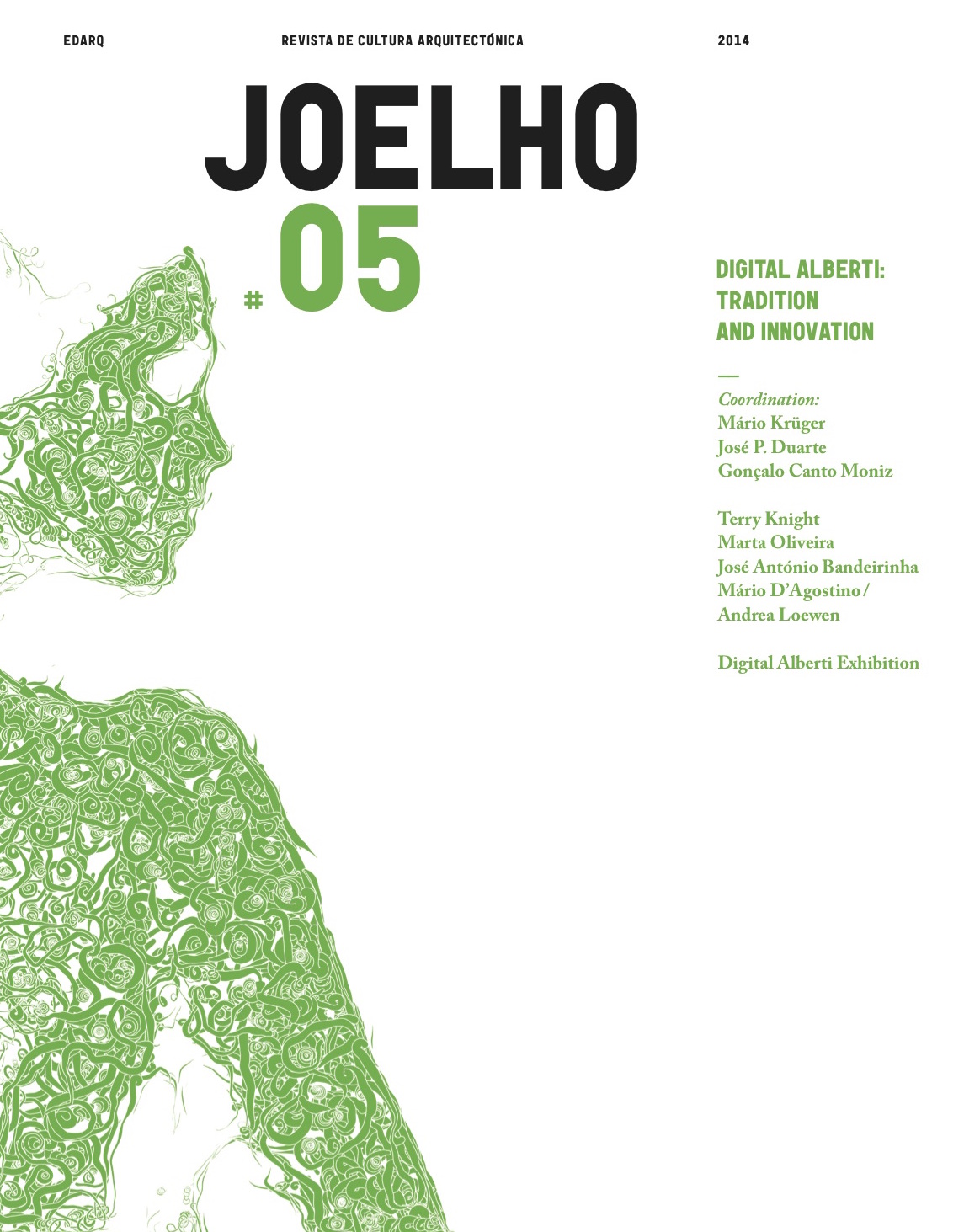Alberti Digital on Portuguese Architecture: Shape Grammar transformations as computational framework to determine the influence of Alberti’s legacy on Portuguese Renaissance churches
DOI:
https://doi.org/10.14195/1647-8681_5_15Palavras-chave:
Shape grammars, generative design, Alberti, classical architectureResumo
The research described in this paper is part of a project aimed to determine the influence of Alberti’s treatise on Architecture De re aedificatoria (1485) on Portuguese Renaissance architecture, making use of a computational framework.
The paper focus on the theoretical foundations that permit to translate the treatise morphological and proportional descriptions of sacred buildings into a description grammar (Stiny, 1981) and a shape grammar (Stiny and Gips, 1972) used it in determining its influence on Portuguese Renaissance architecture.
This approach follows the transformations in design framework proposed by Knight (1983), according to which the transformation of one style into another can be explained by changes of the grammar underlying the first style into the grammar of the second. Grammars are thus proposed as a complementary tool to be used in architectural history to test hypotheses raised after documental evidence.
The paper reviews the three main stages of this research, presenting the methodology and results achieved in each one those moments. Firstly, it describes the process of inferring an initial description grammar and shape grammar directly translated from the De re aedificatoria and also the analysis of their derivation outcomes. Although, several affinities have been found between the solutions generated by the initial grammar and the Portuguese classical churches, others features remained uncertain. In the context of this research project, it seemed appropriate to consider the morphological and proportional design of Alberti most relevant churches to deduce transformations on the grammar. A set of Portuguese Renaissance sacred buildings were chosen and analyzed under the light of Alberti theoretical and design rules. This task was assisted by evaluating resemblances and differences between them and the recursive structure of the grammar, their rules, and the corpus of solutions derived from it. Finally, in order to achieve a grammar representative of the Portuguese Renaissance sacred buildings, further transformations were introduced on the grammar, gathering rules common to Alberti thoughts with Portuguese specific architectonic principles. Although along the process of grammar transformation several rules were added and the spatial relations were changed, the main recursive structure of the successive grammars was kept.
Downloads
##submission.downloads##
Publicado
Edição
Secção
Licença
Direitos de Autor (c) 2014 Bruno Figueiredo

Este trabalho encontra-se publicado com a Licença Internacional Creative Commons Atribuição 4.0.
Acesso Livre
Autores que publicam nesta revista concordam com os seguintes termos:
a. Autores conservam os direitos de autor e concedem à revista o direito de primeira publicação, com o trabalho simultaneamente licenciado sob a Licença Creative Commons Attribution que permite a partilha do trabalho com reconhecimento da autoria e publicação inicial nesta revista.
b. Autores têm autorização para assumir contratos adicionais separadamente, para distribuição não-exclusiva da versão do trabalho publicada nesta revista (ex.: publicar em repositório institucional ou como capítulo de livro), com reconhecimento de autoria e publicação inicial nesta revista.
c. Autores têm permissão e são estimulados a publicar e distribuir o seu trabalho online (ex.: em repositórios institucionais ou na sua página pessoal) a qualquer ponto antes ou durante o processo editorial, já que isso pode gerar alterações produtivas, bem como aumentar o impacto e a citação do trabalho publicado (Veja O Efeito do Acesso Livre).





